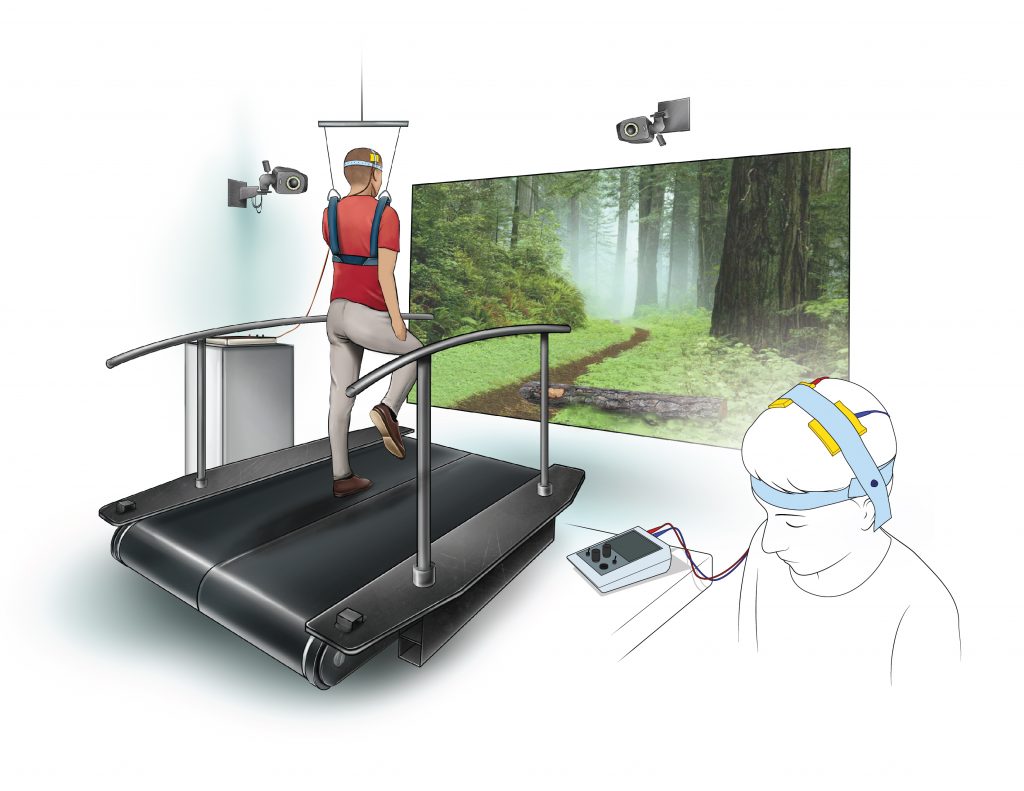Transcranial Direct Current stimulation for post-stroke gait rehab, a pilot study
It is important to develop treatment methods that improve gait for those with persistent deficits following stroke. Transcranial Direct Current Stimulation (tDCS), a form of non-invasive brain stimulation (NIBS), is a promising treatment method that warrants further investigation in gait therapies.
About This Study
The specific aims of this research study are to demonstrate the feasibility of a 10-session protocol combining simultaneous tDCS and gait training to produce a clinically significant lasting improvement in gait performance, and to evaluate neuroplastic brain changes in response to tDCS to both sides of the brain combined with gait training.
Study Information
Study participants will be treated with 10 sessions that consists of both brain stimulation (tDCS) and gait therapy. Gait therapy will include training in the virtual reality environment. The study will demonstrate feasibility of this protocol to achieve clinically significant and lasting improvement in gait performance. Brain stimulation is intended to target two main adaptive neuroplastic mechanisms involved in post-stroke motor recovery: 1) facilitation of the residual ipsilesional motor output pathways for the lower extremity and 2) suppression of transcallosal inhibition from the contralesional motor regions
Detailed program information and criteria available at: https://clinicaltrials.gov/ct2/show/NCT00912041
Principal Investigators: Svetlana Pundik, MD, MSc
Program Contact: Jessica McCabe, PT
Contact Number: (216) 791-3800 x 63830
Contact Email: jmccabe@fescenter.org
Contact Request
Researchers rely on individuals to serve as volunteers for program studies. Each study is designed to answer questions about a specific medical aspect or the effectiveness of a particular treatment. Through the commitment of research volunteers, knowledge gained and communicated to other medical professionals ultimately benefits the community.
If you would like more information about becoming a research volunteer please submit the information below.

